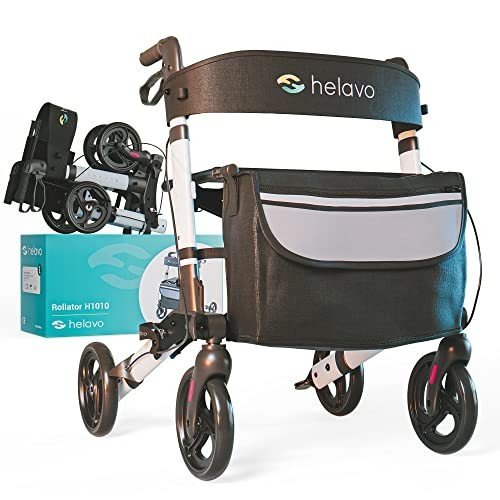Understanding Adjustable Walkers: A Comprehensive Guide
Adjustable walkers are essential mobility aids designed to supply stability and assistance to individuals with mobility obstacles. They enhance self-reliance, safety, and confidence for people recovering from surgery, handling persistent conditions, or dealing with age-related mobility concerns. This short article looks into the features, types, benefits, and typical FAQs related to adjustable walkers, offering insights for potential users and caregivers.
What is an Adjustable Walker?
An adjustable walker is a mobility aid that generally features a lightweight frame with 4 legs, geared up with handgrips for assistance. It can be adjusted to accommodate various heights, making sure users achieve a comfy wrist position while supporting their weight. Adjustable walkers been available in various designs, each customized to specific requirements.
Secret Features of Adjustable Walkers
- Height Adjustment: Most adjustable walkers have telescoping legs, enabling users to easily customize the height to suit their stature.
- Weight Capacity: Different models accommodate varying weight limits, accommodating a broad demographic.
- Foldability: Many walkers are collapsible, making them easy to store and transport.
- Wheels vs. No Wheels: Some walkers feature wheels on the front legs, while others have a basic design without wheels, promoting stability.
- Extra Accessories: Walkers can often be geared up with trays, baskets, or cup holders for included convenience.
| Function | Description |
|---|---|
| Height Adjustment | Telescoping legs for tailored height settings |
| Weight Capacity | Varies by design, supporting various body weights |
| Foldability | Collapsible design for simple transport and storage |
| Wheels | Available in both wheeled and non-wheeled options |
| Additional Accessories | Trays, baskets, and cup holders for user benefit |
Kinds Of Adjustable Walkers
- Standard Walkers: Traditional designs with four legs. Best for those seeking optimum stability.
- Wheeled Walkers (Rollators): Walkers with two or more wheels, enabling simpler maneuvering.
- Hemi Walkers: Designed for individuals with the use of one hand, featuring a single arm assistance for included stability.
- Baby Walkers: Specifically created for babies discovering to stroll, promoting safety and assistance during early mobility.
Benefits of Using Adjustable Walkers
Increase Independence
- Enhanced Mobility: Adjustable walkers allow users to browse their environments with more ease and confidence, promoting a sense of self-reliance.
- Availability: With the right walker, users can keep their lifestyle and take part in activities they delight in without help.
Injury Prevention
- Stability and Support: Walker users can maintain much better balance and prevent falls, which are especially important for seniors and individuals recovering from surgical treatment.
- Reduced Strain: Proper use of a walker can relieve stress on joints and muscles, decreasing the danger of injury throughout mobility.
Comfort and Customization
- Adjustable Settings: Walkers can be customized to each user's height and comfort, using a more customized experience.
- Extra Features: Options for devices help in accommodating personal requirements, making it possible for users to bring products while moving.
Expenses and Considerations
The price of adjustable walkers ranges depending on features, materials, and brand. Here's a summary of the average costs associated with different types:
| Walker Type | Average Cost |
|---|---|
| Requirement Walkers | ₤ 50 - ₤ 100 |
| Wheeled Walkers | ₤ 75 - ₤ 200 |
| Hemi Walkers | ₤ 60 - ₤ 150 |
| Infant Walkers | ₤ 30 - ₤ 70 |
Regularly Asked Questions (FAQs)
1. How do I know which adjustable walker is ideal for me?
The best adjustable walker depends on your specific needs, physical condition, and environment. It's necessary to speak with a healthcare expert to determine the most ideal type.
2. Can I adjust the height of any walker?
A lot of adjustable walkers feature a height-adjustment mechanism. However, not all walkers are adjustable. It's vital to analyze item specs before purchasing.
3. Are wheeled walkers safe to use?
Yes, wheeled walkers (or rollators) are safe for users who can navigate them appropriately. They often include brakes for included safety when fixed.
4. How do I care for my adjustable walker?
Routine care includes cleaning up the walker with moderate soap and water, looking for wear on grips and wheels, and making sure mechanisms operate smoothly.
5. Can I take my adjustable walker on public transport?
Yes, numerous adjustable walkers are foldable and developed for simple transportation. Nevertheless, it's a good idea to check the particular guidelines of the transportation service.

6. Do I need assistance to use an adjustable walker?
Numerous users can run adjustable walkers separately, particularly when properly fitted to their height. However, those with serious mobility concerns might gain from assistance.
Adjustable walkers are invaluable tools for enhancing mobility, independence, and safety. With a variety of styles and designs, individuals can find a walker customized to their needs. Caretakers and users alike must appreciate the value of speaking with health care specialists to make educated decisions concerning mobility aids. Comprehending the functions, benefits, and considerations of adjustable walkers empowers people to keep an active way of life, enhancing their lifestyle regardless of mobility difficulties.

